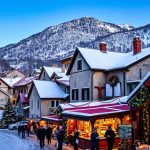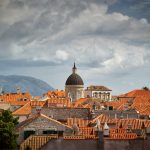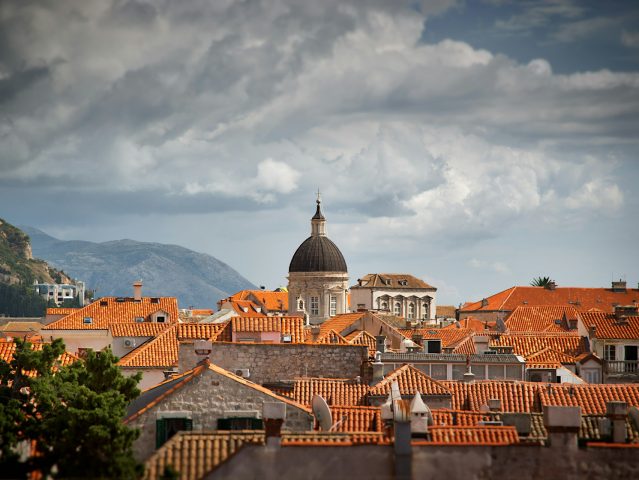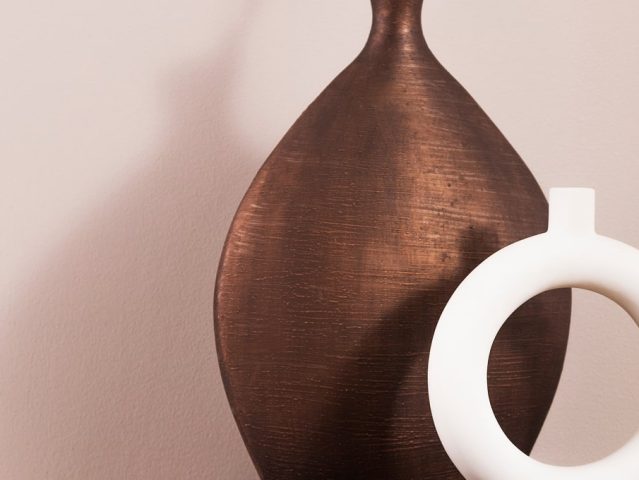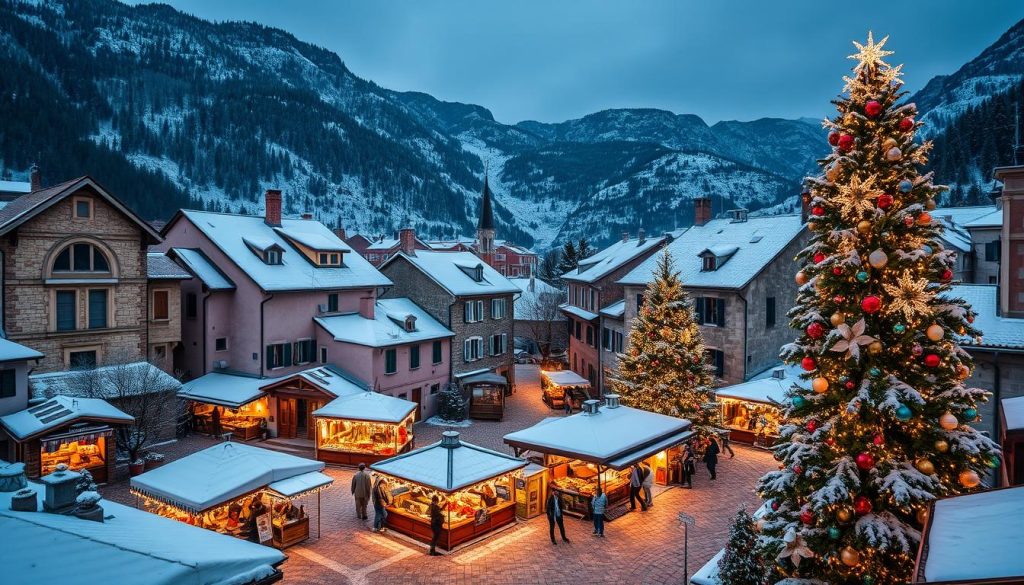
Explore the magical world of Christmas in Croatia. Here, the holiday season is a mix of Christian traditions, old folklore, and Mediterranean charm. From Zagreb‘s snowy mountains to the warm Adriatic coast, Croatia turns into a winter wonderland. It’s a special holiday destination for those wanting to dive into the country’s rich Christmas traditions1.
When Advent starts four Sundays before Christmas Eve, Croatian cities buzz with life. In places like Dubrovnik and Split, December is mild, with temperatures from 41°F to 54°F. But in cities like Zagreb, it’s colder, ranging from 32°F to 46°F1. This variety of winter climate offers a range of experiences, from skiing at Sljeme Peak to enjoying the Advent markets across the country1.
At the core of Croatian holiday traditions are many customs. There’s the making of Advent wreaths and the celebration of St. Nicholas Day on December 6th. On this day, good kids get gifts, while the naughty ones face Krampus2. Throughout Croatia, special regional traditions add to the holiday cheer, like the burning of the badnjak log in Slavonia and the klapa music in Dalmatia2.
The Magic of Croatian Christmas Traditions
Croatia’s Croatian christmas traditions mix old customs with new celebrations. They are rooted in the country’s rich culture. From the croatian holiday celebrations during Advent to the croatia christmas folklore in festive events, the croatian yuletide customs make for a unique holiday experience.
Ancient Customs and Religious Roots
Croatia’s Croatian christmas traditions are closely tied to its Roman Catholic heritage. The Advent season is marked by the lighting of the Advent wreath, showing the wait for Christ’s arrival3. St. Nicholas’ Day on December 6th kicks off the gift-giving season, with children leaving their boots for gifts and maybe even seeing Krampus.
Regional Variations Across Croatia
In Croatia’s different regions, croatian holiday celebrations have their own special touches. In Dalmatia, burning the badnjak, an olive tree Christmas log, is a long-standing tradition. The coastal area is famous for its tasty seafood dishes like pašticada (beef stew) and brudet (seafood stew).
Modern Celebrations and Cultural Significance
Today, croatia festive events mix old and new in a beautiful way. The Advent wreath ritual, where families light candles for hope, peace, joy, and love, is still loved3. The croatian yuletide customs also include lively regional celebrations. For example, Zagreb’s Advent has 129 outdoor concerts, and Dubrovnik’s Winter Festival has a Christmas Fair on the famous Stradun.
The Croatian christmas traditions are a mix of the spiritual and the tasty. They enchant both visitors and locals, offering a magical holiday experience in this amazing European country.
When to Visit Croatia During Christmas Season
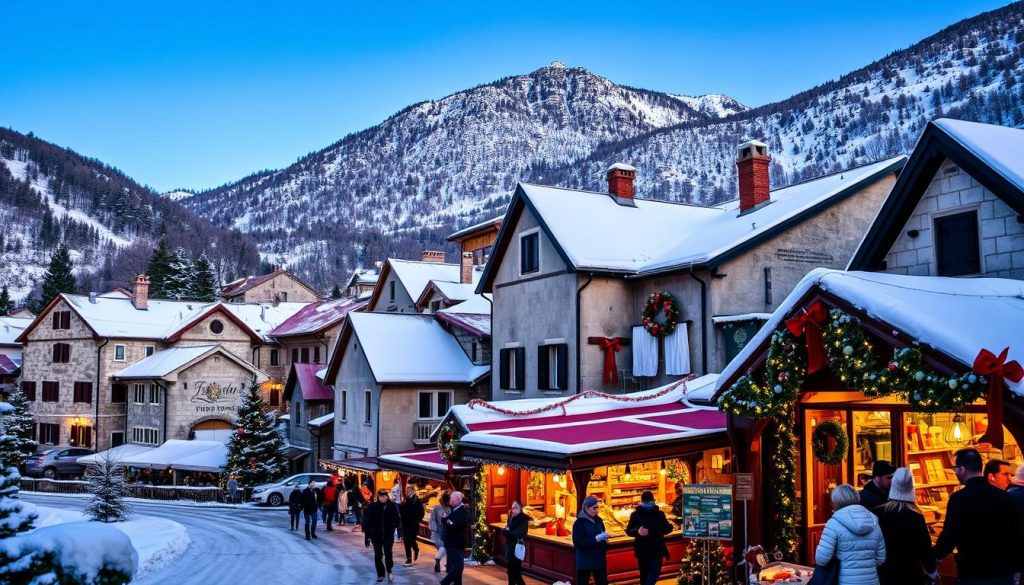
The festive Croatian holiday season starts with Advent, four Sundays before Christmas Eve, and goes through early January4. Zagreb’s Advent celebration lasts from November 30th to January 7th. Dubrovnik and Split also have their winter festivals during this time4. December is filled with Christmas markets, cultural events, and traditional cuisine.
Weather in Croatia varies by region in winter. The coastal areas are milder, with temperatures from 7°C to 15°C in January4. Central and northern regions can get colder, with temperatures from -5°C to +7°C. Mountain areas see temperatures from +1°C to -7°C4. The ‘bura’ wind can make it even colder, with gusts up to 100 km/h4.
Christmas Eve and Christmas Day are the peak times for celebrations in Croatia4. New Year’s Eve in Dubrovnik and Zagreb is also lively4. You can also try truffle hunting in Istria during winter4.
| Region | Average Winter Temperatures |
|---|---|
| Coastal Areas | 7°C to 15°C |
| Central and Northern Regions | -5°C to +7°C |
| Mountain Areas | +1°C to -7°C |
Winter in Croatia is damp, cold, and rainy, especially by the Adriatic coast5. December is cold, with temperatures around freezing inland and below freezing in mountains5. The coast stays milder, between 45°F-50°F (7°C-10°C)5. Rain is common in December, with snow and ice in the north and heavy rains on the coast and islands5.
Despite the cold, Croatia’s winter is less crowded, especially in Dubrovnik and along the coast5. Zagreb is Europe’s top Advent destination, attracting tourists5. Its ski slopes open in December, offering great deals for winter sports5.
December in Croatia is filled with cultural events and festivals. Events like the Pelješac Wine Cellars Open Days in Ston and the Chocolate Festival in Opatija offer unique experiences5. Traditions like decorating Christmas trees in the sea and unique events like the Codfish and Chocolate Week in Rijeka showcase Croatia’s diverse holiday celebrations5.
Zagreb: Europe’s Best Christmas Market
Zagreb’s Advent celebration is a top Christmas market in Europe. It has been named “Best Christmas Market” by European Best Destinations for three years in a row, from 2016 to 20186.
The market covers over 25 spots in the city’s main areas. It starts the Saturday before the first Sunday of Advent and goes until the first week of January6. Visitors can enjoy a winter wonderland with lights, stalls, and traditional Croatian food and crafts7.
Award-Winning Festive Attractions
Advent Zagreb has cultural highlights like the big Christmas tree at Ban Jelačić Square and “moon dust” decorations at Ribnjak Park7. The Grič Tunnel turns into a magical North Pole scene, with icy displays7.
Must-Visit Locations in Zagreb
Zagreb also has a rich cultural history. Trakošćan Castle, a 13th-century castle, shows Croatia’s history and architecture6. Varaždin, a baroque city, is a great day trip from Zagreb6. Food lovers will enjoy Tavren Gabreku in Samobor, a restaurant with nearly a century of history6.
Entertainment and Cultural Programs
Advent Zagreb offers a holiday season full of festive spirit and city culture7. It has concerts, exhibitions, and entertainment for all ages7. Families can have fun and try traditional Croatian food and drinks at food stalls7.
The UNESCO Representative list includes hand-carved wooden toys from Hrvatsko Zagorje and Licitar cookies, a Croatian symbol since the 13th century6. These traditions are celebrated at the Zagreb Christmas market, giving visitors a peek into Croatia’s heritage6.
“Advent Zagreb promises an extraordinary holiday season filled with festive spirit, vibrant city culture, and timeless charm.”
Christmas in Croatia: Weather and Winter Activities
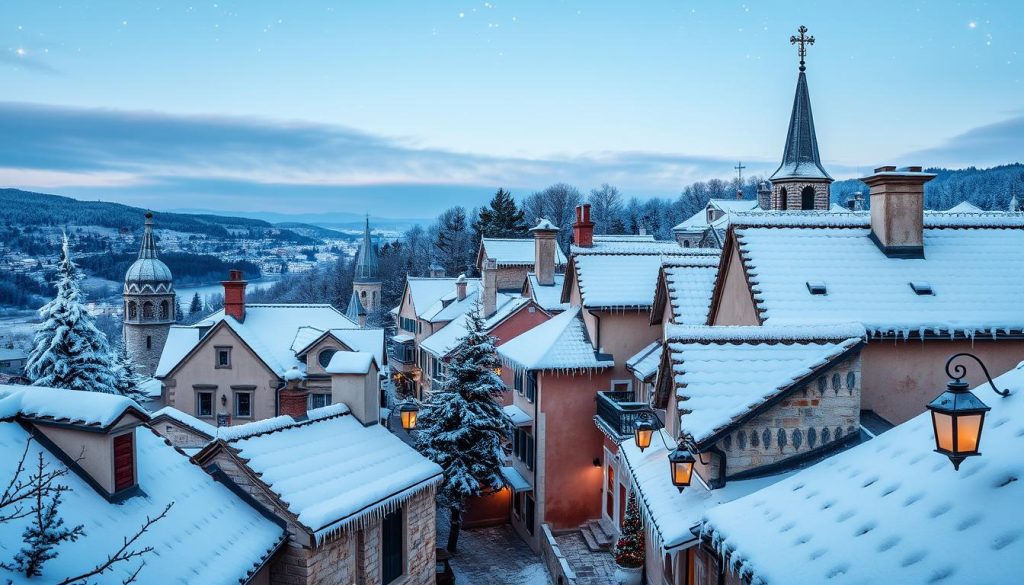
Croatia’s varied landscapes create a rich winter experience. Coastal areas like Dalmatia and Istria have a mild Mediterranean climate, with temperatures between 5°C to 15°C (41°F to 59°F).8 Inland places, such as Zagreb and Slavonia, have a Continental climate, with temperatures from -5°C to 5°C (23°F to 41°F).8 The mountainous Gorski Kotar region has an Alpine climate, with temperatures often below 0°C (32°F) and lots of snow. It’s perfect for winter sports8.
Zagreb, Croatia’s capital, is famous for its top-notch Christmas market8. Visitors can see the city’s historic sites and cultural spots during winter. They often find fewer crowds and lower prices than in summer8.
- Winter activities in Croatia include skiing and snowboarding at resorts like Sljeme near Zagreb and in the Gorski Kotar region8.
- Plitvice Lakes National Park becomes a winter wonderland, with frozen waterfalls, ice-covered lakes, and snowy trails. It offers a unique experience with fewer visitors8.
- Coastal areas have milder weather for exploring Christmas markets, enjoying seaside festivities, and spa treatments and wellness retreats8.
- Inland places, like castles and museums, are great for indoor exploration during the cold months8.
Croatia’s winter weather can be unpredictable, with coastal areas experiencing biting winds and occasional rain, while inland regions are more prone to snowfall.9 The best time for snow in Croatia is typically in December and January, with February and March more likely to see rain on the coast.9 Despite the weather, Croatia’s winter season is a unique, budget-friendly, and crowd-free time to explore its diverse natural and cultural wonders89.
“Croatia’s winter wonderland offers a magical escape, with frozen lakes, snowy trails, and cozy festivities.”
Croatian Holiday Season Culinary Delights
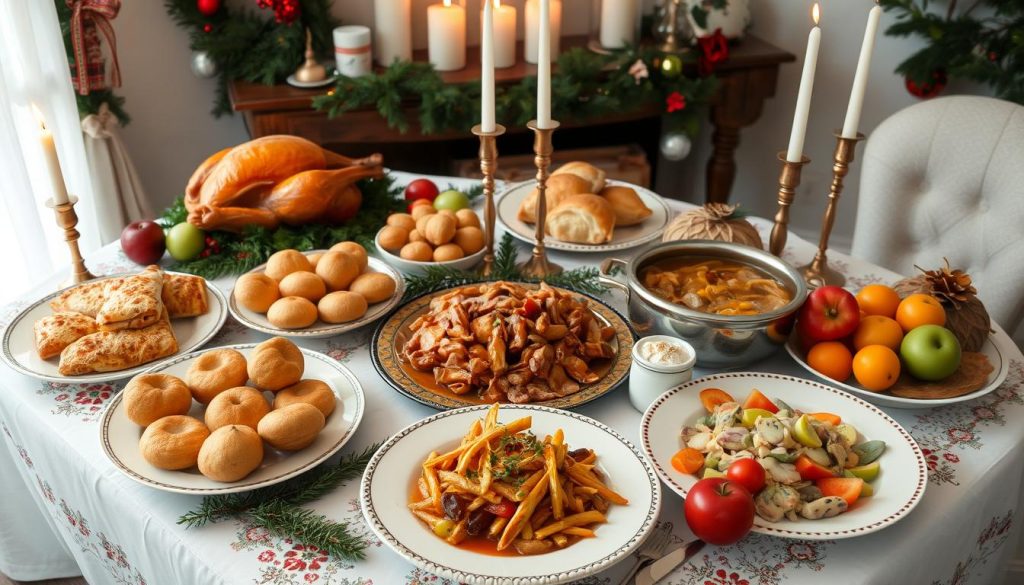
Croatia’s rich culinary heritage shines brightly during the festive croatian christmas cuisine and croatian holiday cuisine season. From the Adriatic coast to the continental regions, the country’s croatian festive cuisine offers a tantalizing array of traditional dishes, sweets, and regional specialties. These dishes capture the essence of Croatian Christmas celebrations10.
Traditional Christmas Eve Dishes
On Christmas Eve, a traditional fasting day, seafood takes center stage. In coastal areas like Dalmatia and Istria, families often serve bakalar, a salted and dried cod dish, along with other seafood delicacies10. Inland regions, however, may feature heartier fare, such as roasted turkey or sarma. This dish is made of fermented cabbage leaves stuffed with minced meat and rice11.
Festive Sweets and Treats
No Croatian croatian christmas food celebration is complete without an array of indulgent sweets and pastries. Fritule, small fried doughnuts, are a beloved Christmas treat, as are medenjaci, honey-infused cookies, and orehnjača, a delectable walnut roll pastry10. These delectable confections are often paired with a warming cup of mulled wine, known as kuhano vino, to create a truly festive experience10.
Regional Holiday Specialties
Croatia’s diverse culinary landscape is reflected in the regional variations of croatian holiday cuisine. In Slavonia, roasted pork or chicken are prominent on the Christmas table, while Istrians might prepare maneštra with chickpeas, posutica with cod, and stewed greens with potatoes and cod11. Dalmatian cuisine often features cod as an essential Christmas Eve dish, along with traditional lamb and pašticada, a beef stew11. These regional specialties showcase the country’s rich cultural heritage and local ingredients12.
From the coastal regions to the continental heartland, Croatian croatian christmas food offers a delectable journey through the country’s vibrant culinary traditions. This makes the holiday season a truly memorable experience for both locals and visitors alike10.
Advent Celebrations and Religious Customs
Croatia’s advent celebrations kick off the Christmas season, starting four weeks before Christmas Eve13. About 90 percent of Croatians are Catholic13. This time is for spiritual preparation and reflection14. The season includes a four-week fast and special morning masses like Zornica or Rorata14.
Creating advent wreaths is a big tradition. They have evergreen branches and four candles for hope, peace, joy, and love14. Cities and towns light up with festive lights and hold advent markets. These places are full of holiday cheer13.
Religious customs are key during advent. Attending Midnight Mass on Christmas Eve is a common practice among Croatians.14 Christmas Eve is a day of fasting. Traditional dishes like cod, sarma, and roast suckling pig are made with care13.
The tradition of bringing in the Yule log, or “Badnjak,” is unique14. Sowing Christmas wheat on St Lucia’s Day (13 December) symbolizes life and prosperity1314.
Even though religious events were banned during communism15, Croatia’s traditions have come back strong15. Today, the advent wreath and other customs are found everywhere. They show the deep meaning of this special time15.
Coastal Christmas: Dubrovnik and Split Festivities
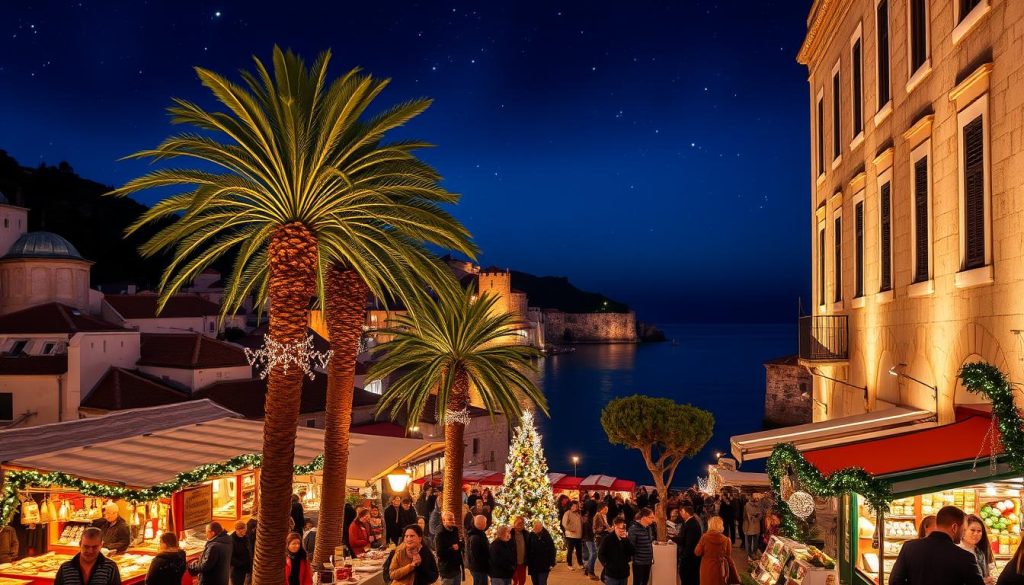
The coastal cities of Dubrovnik and Split in Croatia host magical Christmas celebrations16. These festivities mix the area’s rich culture with holiday cheer. It’s a special and unforgettable way to celebrate Christmas by the sea.
Dubrovnik Winter Festival Highlights
Dubrovnik, a UNESCO World Heritage site, turns into a winter wonderland during the Dubrovnik Winter Festival17. The festival runs from November 30 to New Year’s Day 2025. It includes a Christmas Fair on Stradun, cultural events, and the Cod Festival, celebrating the sea’s traditions17.
Split’s Christmas Market Experience
Split, up the coast, hosts “To You and Yours” festivities at famous spots like Pjaca and Riva17. These celebrations, from November 30 to January 6, 2025, mix old and new. They feature concerts, kids’ programs, and a big New Year’s Eve bash with Dubioza Kolektiv17.
Dubrovnik and Split beautifully blend their culture into their holiday events. This makes for a special coastal Christmas experience for visitors16.
“The Adriatic coast of Croatia comes alive with a festive spirit during the Christmas season, offering a truly enchanting and culturally immersive experience for all who visit.”
Walking through Dubrovnik’s Winter Festival or checking out Split’s markets is a must for holiday travelers16. These coastal Christmas celebrations in Croatia’s Dalmatian cities are unforgettable.
Traditional Croatian Christmas Decorations
Croatia’s Christmas decorations mix old traditions with new ideas. The Advent wreath is a key part of Croatian holiday decor18. It’s made from evergreen branches or straw and has four candles. Decorating apples with ornaments is also unique in Croatia. It symbolizes health and prosperity19.
The Christmas tree is a big part of the holiday. It’s decorated with ornaments, lights, and tinsel. Nativity scenes, called jaslice, are found in homes and churches. They add a sacred feel to the celebrations18.
Planting wheat on St. Lucia’s Day (December 13th) is a special tradition. It’s both a decoration and a symbol of future abundance1819. Streets and town squares are lit up with festive lights and decorations. This creates a magical atmosphere for everyone.
From the Advent wreath to the jaslice, Croatian Christmas decorations are a mix of old and new. They show the country’s rich cultural heritage181920.
“The beauty of Croatian Christmas decorations lies in the way they seamlessly weave together the old and the new, creating a truly enchanting holiday experience.”
St. Nicholas Day and Gift-Giving Traditions
In Croatia, the holiday season starts with St. Nicholas Day on December 6th. This day begins the country’s gift-giving traditions, rooted in its culture and faith21. About 85% of Croatians are Catholic, making Advent a key time for them22.
The Legend of Krampus
St. Nicholas is joined by the scary Krampus, a figure who warns naughty kids23. Krampus brings twigs for bad kids, while St. Nicholas gives sweets and twigs to all23.
Croatian Santa Claus (Djed Božićnjak)
The Croatian Santa, Djed Božićnjak, looks a lot like the Western Santa. He brings gifts on Christmas Eve or morning, just like Santa22. Kids clean their shoes for St. Nicholas Day, hoping for chocolates and small gifts22.
Even though Croatian Christmas focuses on peace, love, and family, getting presents from St. Nicholas and Djed Božićnjak is still a big part of the holiday22.
“The emphasis in Croatian Christmas traditions is on peace, love, family gatherings, and traditional Christmas foods rather than gift-giving.”
Christmas Markets Beyond Zagreb
Zagreb’s Christmas market is famous, but Croatia has many more. Dubrovnik’s Winter Festival and Split’s Diocletian’s Palace are just a few places to explore. They offer a special holiday experience24.
Dubrovnik’s Winter Festival turns the Old Town into a magical place. Stalls line the Stradun promenade, making it a winter wonderland24. Split’s market, by Diocletian’s Palace, features local crafts and treats like fritule pastries24.
Head to the Kvarner Riviera for Opatija’s Advent celebrations. The city lights up parks and promenades, creating a magical feel24. Osijek’s Tvrđa district has a festive fair with local foods and crafts24.
Varaždin in the north has an “Ice Wonderland” and a Ferris wheel for views. Its Christmas market is lively, adding to the fun24. These markets let you dive into Croatia’s culture and traditions, making your holiday unforgettable24.
| Christmas Market | Location | Unique Features |
|---|---|---|
| Dubrovnik Winter Festival | Dubrovnik | Stalls along the iconic Stradun promenade |
| Split Christmas Market | Split | Backdrop of Diocletian’s Palace, traditional fritule pastries |
| Opatija Advent Celebrations | Opatija | Illuminated parks and promenades |
| Osijek Christmas Fair | Osijek | Historic Tvrđa district, regional specialties and crafts |
| Varaždin Ice Wonderland | Varaždin | Skating park, Ferris wheel with panoramic views |
“These diverse markets across Croatia’s regions allow visitors to immerse themselves in the country’s rich cultural heritage and traditions, creating a truly unforgettable holiday experience.”
Croatia’s Christmas markets are a journey through festive traditions. From Dubrovnik’s charm to Varaždin’s beauty, they offer a unique holiday experience24.
Croatian Christmas Music and Entertainment
Croatia’s festive season is a mix of old carols and new celebrations. The country’s rich music heritage comes alive, enchanting visitors with Croatian Christmas music.
Traditional Carols and Modern Celebrations
The Croatian Christmas carols have been loved for generations. Classics like “U to vrijeme godišta” fill churches and homes25. In Dalmatia, klapa singing is big, adding to the coastal Croatian holiday entertainment25.
As the season grows, Croatia christmas events mix old and new25. Zagreb’s Advent program has 129 outdoor concerts in lively spots26. The Croatian National Theatre, a gem since the late 1800s, offers holiday shows like “The Nutcracker.”26
Festival Performances and Events
The Christmas spirit in Croatia shines through many festivals and events. The Snow Queen Trophy Competition at Sljeme Ski Resort is a hit, attracting 20,000 fans26. Zagreb’s Christmas markets feature traditional crafts and tasty treats like kabasice sausages and medenjaci honey biscuits26.
As the year ends, cities in Croatia host New Year’s Eve concerts and fireworks displays. These events bring joy to both locals and visitors25. Whether you love traditional carols or modern festivities, Croatian Christmas music and entertainment offer a magical holiday experience2625.
Christmas Eve Customs and Midnight Mass
Christmas Eve in Croatia is a time filled with tradition. As the sun sets, families start their fasting, making meatless meals like bakalar (salted cod)14. They decorate the Christmas tree and wait for the night’s fun to begin. In some places, like Slavonia, they burn the badnjak (Yule log) for warmth and protection14.
As night falls, families have a special dinner, often with fish dishes. The main event is Polnoćka (Midnight Mass), a key tradition in Croatia and Christianity14. Churches hold services to celebrate Christ’s birth, filled with carols and a sense of togetherness27.
After the mass, the fun goes on into Christmas Day. Families and friends gather, celebrating the holiday spirit27. This mix of old customs and faith truly captures the heart of Croatian Christmas Eve. It creates memories that last long after the midnight bell rings.
Source Links
- Discover the Charm of Christmas in Croatia | Adventures Croatia
- Christmas Traditions in Croatia – VisitCroatia.com – Tasteful Croatian Journeys
- Explore Christmas In Croatia: Croatian Christmas Traditions & Festivities
- Croatia in Winter: Why to Skip It & What to Do If You Go
- Croatia in December: Travel Tips, Weather & More
- Christmas in Zagreb – VisitCroatia.com – Tasteful Croatian Journeys
- Zagreb Christmas Market 2024 – Opening Dates, hotels, things to do,…
- CROATIA IN WINTER: EVERYTHING YOU NEED TO KNOW BEFORE VISITING – Karla Types
- Experiencing Croatia in Winter: know before you go — Helena Bradbury
- Croatian Christmas Food and Wine | Festivities and Feasts
- Croatian Christmas Food Across The Regions | Adventures Croatia
- Croatian Christmas Traditions – Mogwai Soup Blog
- A Guide To Croatian Christmas Traditions
- Why is Christmas SO Big in Croatia? | Did you know? | Come To Croatia
- About Christmas in Croatia now and before
- Christmas in Croatia: Exploring Festive Traditions and Magical Markets
- Christmas in Croatia: Five fantastic Advent celebrations across the country
- Christmas in Croatia | Customs & traditions explained
- Traditional Christmas customs in Croatia
- Christmas traditions in Croatia
- Unusual Croatian Christmas Traditions | Adventures Croatia
- Christmas in Croatia on whychristmas?com
- Croatia – St. Nicholas Center
- Christmas markets in Croatia: advent trip to Zagreb and Opatija – Emma’s Roadmap
- Christmas in Croatia: Traditions & How to Celebrate
- Experience the Magic of Christmas in Zagreb
- Your Dubrovnik Christmas Guide for 2025 in Croatia

